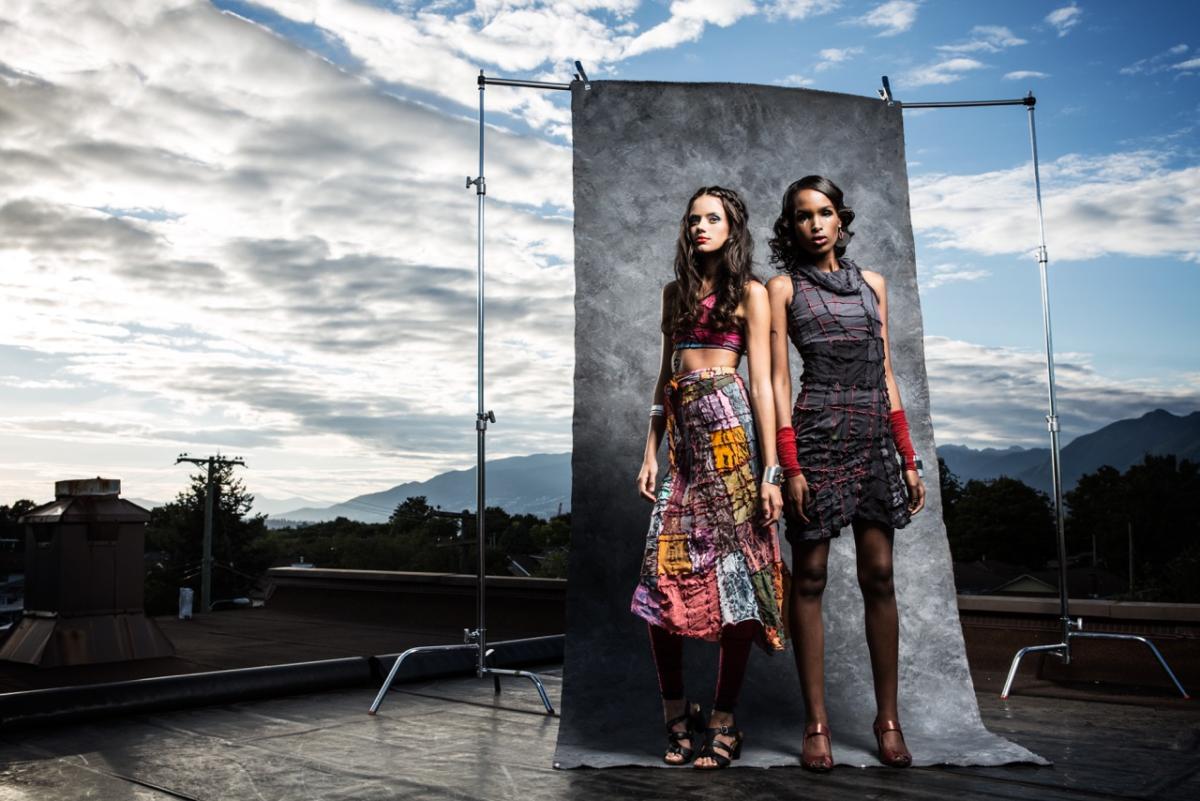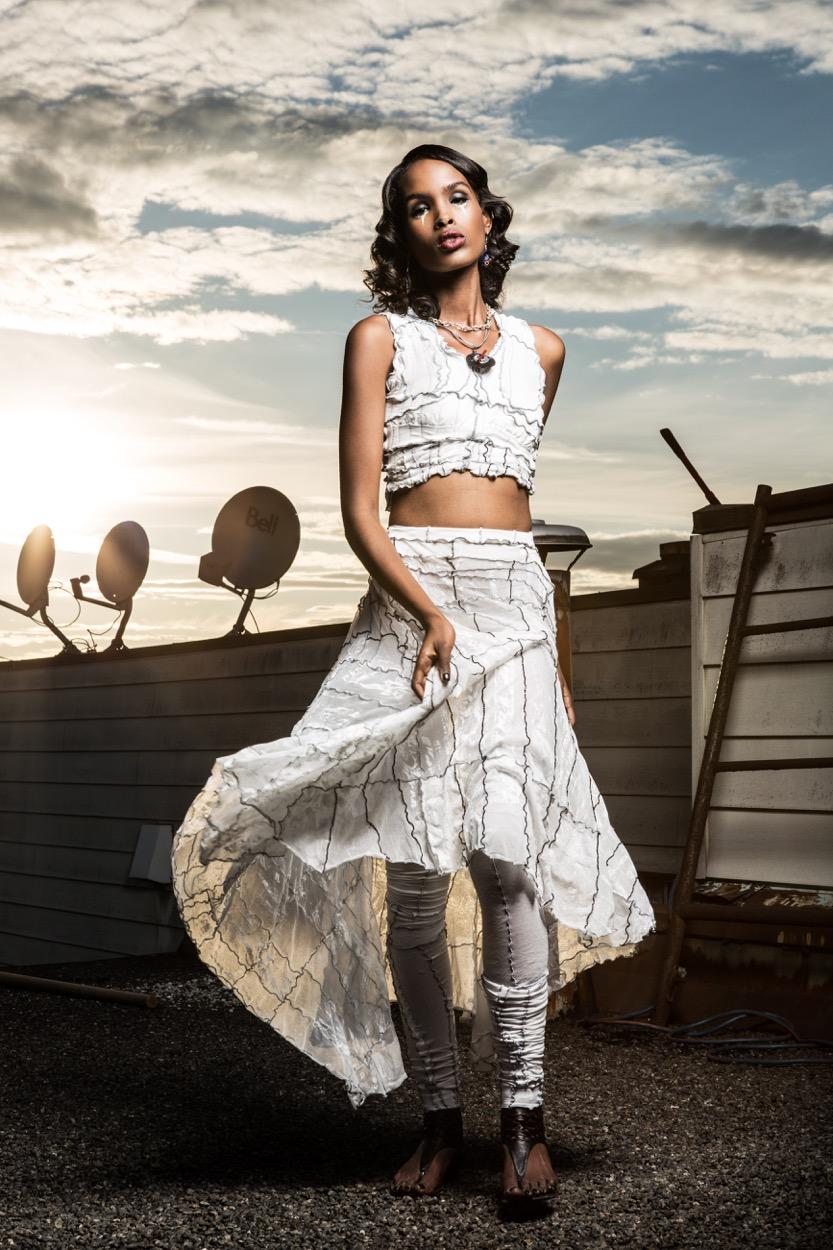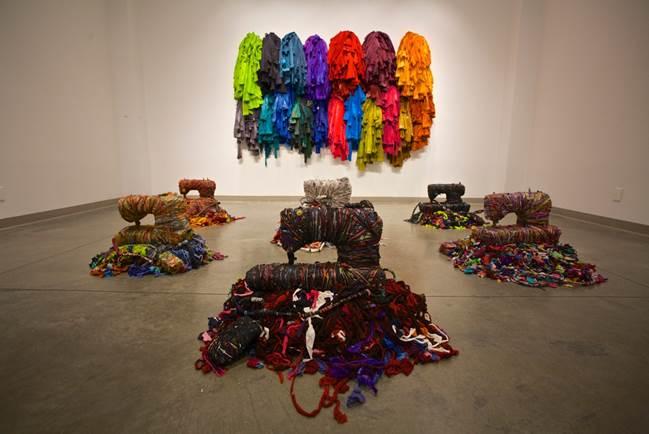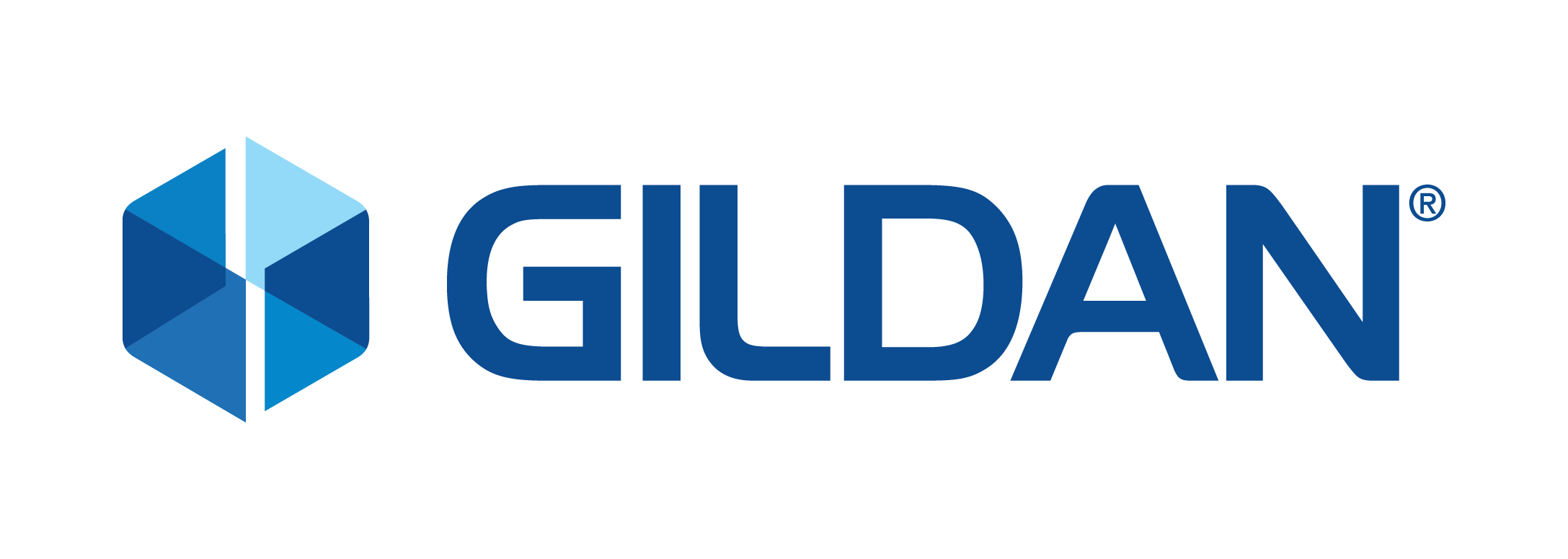Gildan Partners With Sans Soucie to Give New Life to Hosiery Waste
Gildan Talks to Innovator and Designer Katherine Soucie of Sans Soucie Textile and Design
Gildan launches its partnership with Katherine Soucie, founder of Sans Soucie Textile and Design, providing hosiery waste that is transformed into new garments and textiles. Sans Soucie is a zero waste textile and clothing design studio that transforms pre-consumer nylon waste hosiery into new hand-made textiles for garment production. All offcuts are kept and transformed into garments, textile constructions, accessory lines and sculptural forms/installations.
Gildan ships hosiery waste to Sans Soucie from its Gildan Apparel Canada Manufacturing facility located in Montreal, Quebec. The partnership with Sans Soucie is part of Gildan’s goal of finding alternatives to landfill for its waste, 86% of which is already recycled or repurposed.
The award-winning, Vancouver-based artist Katherine Soucie, creates unique fashion pieces for her label Sans Soucie completely out of garment production waste. Katherine has developed a way to avoid landfilling textile waste by transforming discarded textiles into new materials that are functional, easy to care for and are one of a kind.
Sans Soucie employs traditional artisanal textile applications and uses low impact dyes and textile inks for new creations, many of which have been found on fashion runways from Paris to New York. The dyeing process is entirely zero waste. All dyes and textile inks used in the process are low-impact and metal free and all water is reused in an entirely closed-loop process.
A pioneer, innovator and seamstress with both the vision and skill to repurpose textile waste, Katherine has won awards worldwide for her ability to turn previously discarded materials into comfortable, stylish and contemporary garments and textiles. Katherine talks about the intersection of her art and business, and how being a Canadian designer is a strong sense of identity and pride.
Q. You have been designing with recycled textiles at your Sans Soucie studio for almost 15 years now. During that time, you have made quite an impression in the fashion world with your reimagined garments that are not only striking but highly wearable. Where do you sell your pieces and who are your clientele?
Katherine: I often showcase my garments in pop-ups at designer showcases such as First Pick (September 15 & 16) and Shiny, Fuzzy Muddy (December 9 & 10), however, my clothing/accessories can mostly be found at Circle Craft in Vancouver, a co-operative featuring the work of over 150 craftspeople from across British Columbia. Generally, the women who buy my work are between 30-75 years of age, are environmentally aware and possess a strong sense of self. They desire textiles and clothing that are unique, comfortable, easy to care for and perfect for travel. They are individuals who are looking to express who they are in either subtle or dramatic ways and want to invest in clothing that allows them to feel connected to the source, i.e. connected to where it was made, who it was made by, etc. My clientele also really love that fact that material resource I work with comes from a Canadian manufacturer.
Q. What do you have planned for your next fashion project?
Katherine: I am in the process of working on my next collection. I have been invited to showcase at Eco Fashion Week (Australia) and Green Fashion Week (Italy) this October and November and hoping that I will be able to participate.
Q. Can you tell us about how you came to develop your textile creation process?
Katherine: When I moved to Vancouver years ago, all the major sportswear manufacturing that used to exist here was on its way out. This led me, and other eco-minded artists and designers to become resourceful and create with what was available to us. In my case, I bought machinery from factories that were closing down in order to manufacture and hand craft new fabrics out of manufacturing waste. I was also motivated to create a uniquely Canadian textile by-product made from manufacturing waste produced in Canada.
When it comes to my process, I utilize obsolete, decommissioned industrial sewing and textile equipment I have acquired over the years to revitalize waste hosiery. I also employ hand screen printing (no automation) and a zero-waste sequential hand dyeing process.
My intention has always been to find new ways to create ideas, pathways (and even business models) where craft and industry have the opportunity to intersect, co-exist and inspire. In my years of working with waste hosiery, I have witnessed the valuable role this material resource serves as a means for cultural identity and creative expression.
Q: Why is it important for you to work with a Canadian manufacturer?
Katherine: I have always been motivated by this concept of working with Canadian manufactured materials. As a designer, I have always felt that I have a responsibility to what I put out there. I wanted to try to find an alternative method in how I approached the design process to create work that would not only support existing Canadian manufacturers but allowed for the opportunity for collaboration, new pathways and design ideas to emerge with the intent to inspire others and to create alternative business models.
I do take pride in being able to work with materials sourced from here as it led me to develop and establish my cultural and creative identity as a Canadian and cultural producer.
Q: What are the some of the current projects you are working on?
Katherine: I recently hand dyed 150 lbs of hosiery offcuts for an installation at the Seymour Art Gallery in North Vancouver, BC. The exhibition, named Regeneratus, is a two person show between myself and Michelle Sirois-Silver, a textile artist based in Vancouver. I have two pieces of work in the show, the Hosiery Wall (an installation of 150lbs of hand dyed waste hosiery) and Raisons D’Etres (installation of broken sewing machines wrapped with the hand dyed/printed waste hosiery offcuts I produce when making clothing).
This exhibition came to be as a result of what can be made possible when artists come together and communicate through one material. I find the installation work I do helps inform my garment making process and serve as 3D sketches for new ideas and explorations as well as become part of the story I want to tell with this material resource. I often use my soft sculptures and installations in photoshoots and in my marketing materials.
For more information, visit www.sansoucie.ca




